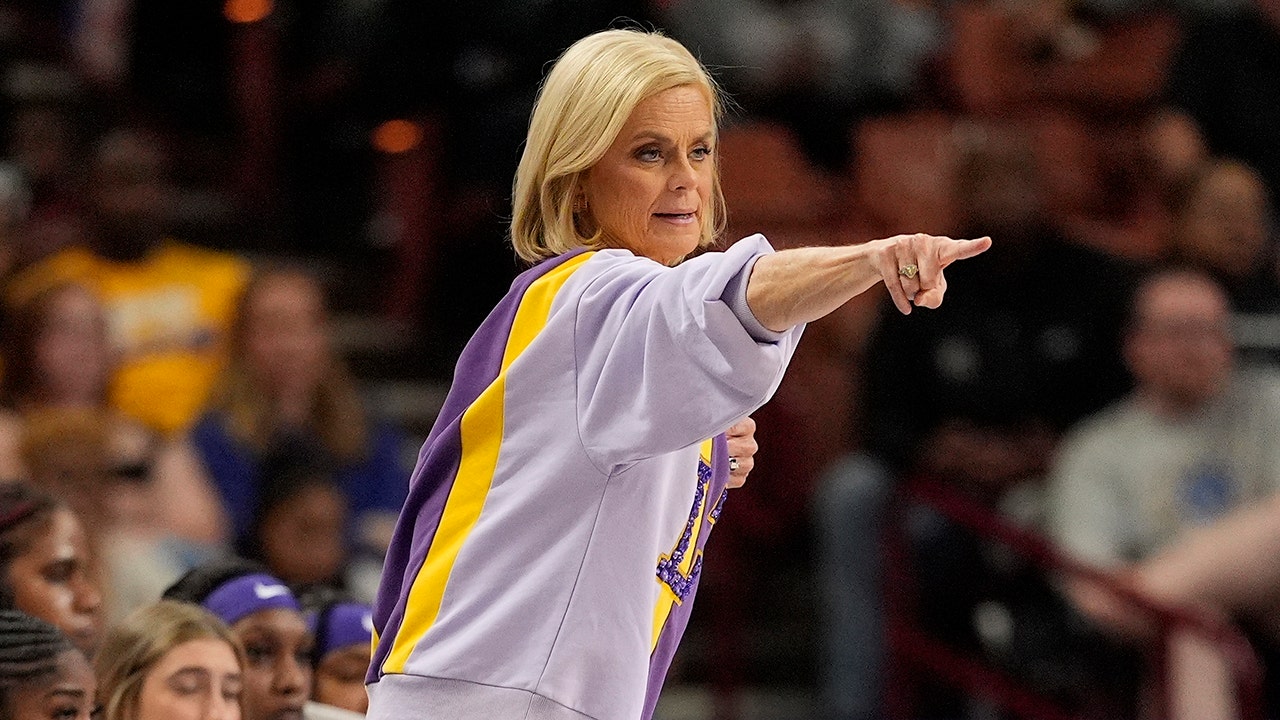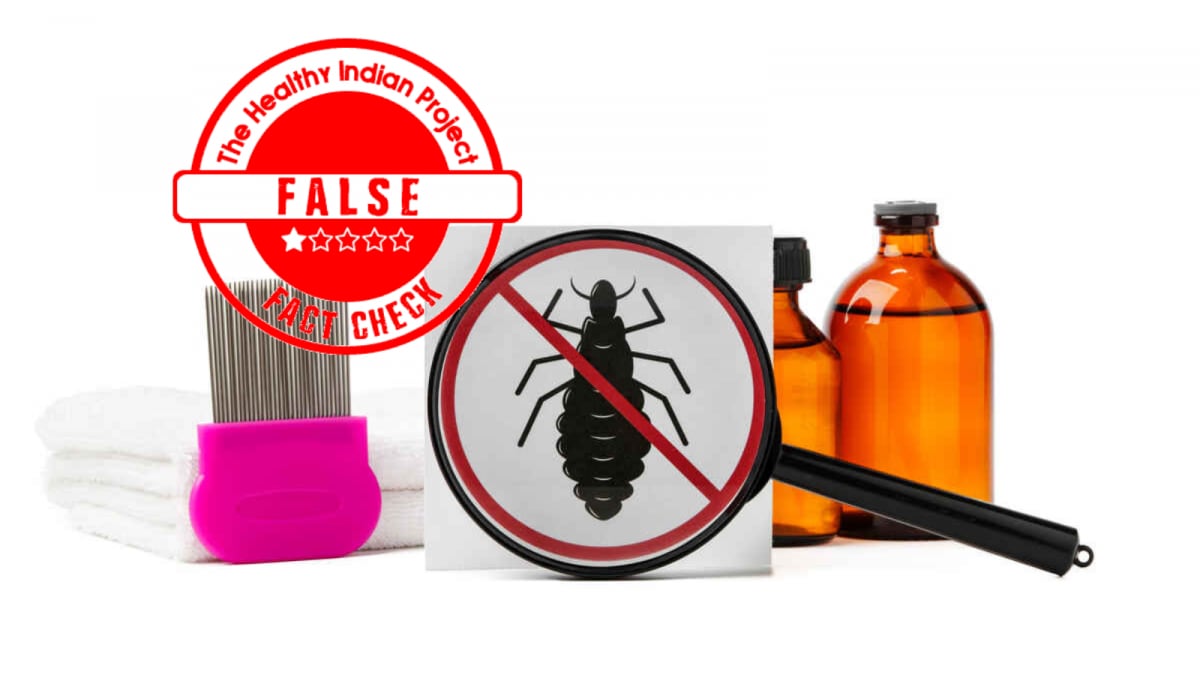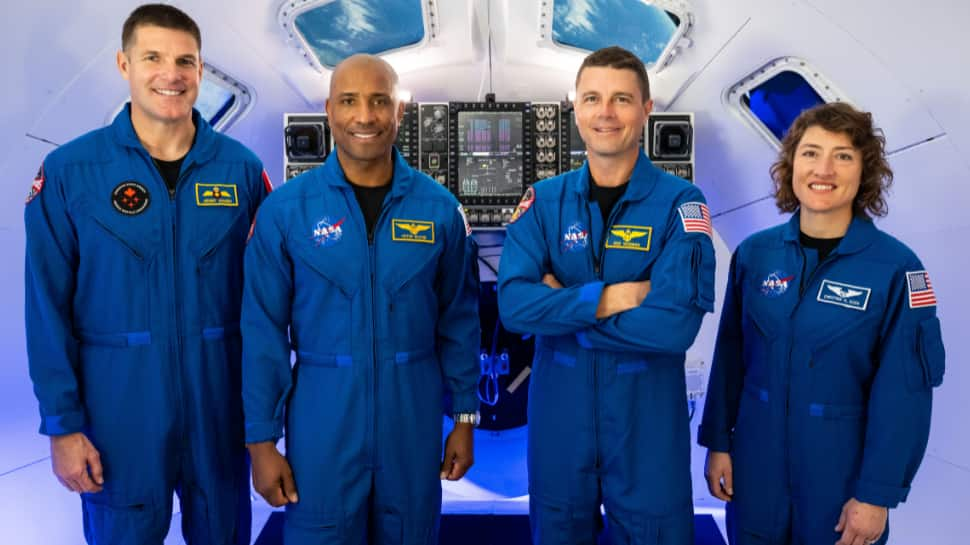New Delhi: The National Aeronautics and Space Administration (NASA) and the Canadian Space Agency (CSA) on Monday announced the four astronauts who will venture around the Moon on Artemis II, the first crewed mission on the American space agency’s path to establishing a long-term presence at the Moon for science and exploration through Artemis. The agencies revealed the crew members — three from NASA and one from CSA — during an event at Ellington Field near NASA’s Johnson Space Center in Houston.
NASA named the first woman and the first African American ever assigned as astronauts to a lunar mission, introducing them as part of the four-member team chosen to fly on what would be the first crewed voyage around the moon in more than 50 years.
“The Artemis II crew represents thousands of people working tirelessly to bring us to the stars. This is their crew, this is our crew, this is humanity’s crew,” said NASA Administrator Bill Nelson at the event.
“NASA astronauts Reid Wiseman, Victor Glover, and Christina Hammock Koch, and CSA astronaut Jeremy Hansen, each has their own story, but, together, they represent our creed: E pluribus unum – out of many, one,” he added.
Here they are. @SenBillNelson announces the #Artemis II crew, the next astronauts to fly around the Moon:@Astro_Christina@Astro_Jeremy@AstroVicGlover@Astro_Reid
We go together. https://t.co/XdUizg2Wye pic.twitter.com/6Yo4I2lKeJ
— NASA (@NASA) April 3, 2023
“Together, we are ushering in a new era of exploration for a new generation of star sailors and dreamers – the Artemis Generation,” the NASA Administrator said.
Christina Koch
Christina Koch, an electrical engineer, who has been part of NASA’s first three all-female spacewalks, was named as a mission specialist for the Artemis II lunar flyby expected as early as next year.
She has served as a flight engineer aboard the space station for Expedition 59, 60, and 61.
Meet the first member of our #Artemis II Moon crew: mission specialist @Astro_Christina!
Christina Koch visited the @Space_Station in 2019, where she took part in the first all-woman spacewalk. She began her career as an electrical engineer at @NASAGoddard. pic.twitter.com/mi82SayXUm
— NASA (@NASA) April 3, 2023
Koch has also set a record for the longest single spaceflight by a woman with a total of 328 days in space.
Victor Glover
Victor Glover, a US Navy aviator, and veteran of four spacewalks, has been designated as pilot of Artemis II. He will be the first Black astronaut ever to be sent on a lunar mission. The mission will be his second spaceflight, serving previously as a pilot on NASA’s SpaceX Crew-1, which landed on May 2, 2021, after 168 days in space.
As a flight engineer aboard the space station for Expedition 64, Glover has contributed to scientific investigations, technology demonstrations, and participated in four spacewalks.
Our #Artemis II pilot is @AstroVicGlover!
Victor Glover is part of our 2013 class of @NASA_Astronauts and was the pilot for NASA’s @SpaceX Crew-1 mission. He’s logged 3,000 flight hours in more than 40 different aircraft, and will pilot @NASA_Orion around the Moon. pic.twitter.com/P0zJ8pwaeL
— NASA (@NASA) April 3, 2023
According to NASA, he has logged 3,000 flight hours in more than 40 different aircraft.
Reid Wiseman
Reid Wiseman, another former US Navy fighter pilot, has been named as mission commander. This will be his second trip into space, serving previously as a flight engineer aboard the International Station for Expedition 41 from May through November 2014.
Wiseman has logged more than 165 days in space, including almost 13 hours as lead spacewalker during two trips outside the orbital complex.
…and rounding out our #Artemis II Moon crew: mission commander @Astro_Reid!
Reid Wiseman lived & worked aboard the @Space_Station as a flight engineer in 2014. He also commanded the undersea research mission NEEMO21, and most recently served as Chief of the @NASA_Astronauts. pic.twitter.com/AincR66wpf
— NASA (@NASA) April 3, 2023
Prior to his assignment, he served as chief of the Astronaut Office from December 2020 until November 2022.
Jeremy Hansen
The Artemis II Mission crew also includes Jeremy Hansen, the first Canadian ever chosen for a flight to the moon, as a mission specialist.
A colonel in the Canadian Armed Forces and former fighter pilot, he holds a Bachelor of Science in space science from the Royal Military College of Canada in Kingston, Ontario, and a Master of Science in physics from the same institution in 2000, with a research focus on Wide Field of View Satellite Tracking.
Representing the @csa_asc on #Artemis II to the Moon is @Astro_Jeremy, from London, Ontario.
Jeremy Hansen was a fighter pilot before joining CSA, and currently works with NASA on astronaut training and mission operations. This will be Hansen’s first mission in space. pic.twitter.com/zIVetAQeFE
— NASA (@NASA) April 3, 2023
He was one of two recruits selected by CSA in May 2009 through the third Canadian Astronaut Recruitment Campaign and has served as Capcom in NASA’s Mission Control Center at Johnson and, in 2017, became the first Canadian to be entrusted with leading a NASA astronaut class, leading the training of astronaut candidates from the United States and Canada.
US President Joe Biden privately called the four on Sunday to congratulate them, the White House said.
The @NASA Artemis II crewed mission around the Moon will inspire the next generation of explorers, and show every child – in America, in Canada, and across the world – that if they can dream it, they can be it. pic.twitter.com/X8q3GLTBiQ
— President Biden (@POTUS) April 3, 2023
The NASA Artemis II crewed mission around the Moon will inspire the next generation of explorers, and show every child – in America, in Canada, and across the world – that if they can dream it, they can be it, Biden said.
All about NASA’s Artemis II Mission to moon
Artemis II will mark the debut crewed flight – but not the first lunar landing – of an Apollo successor program aimed at returning astronauts to the moon’s surface later this decade and ultimately establishing a sustainable outpost there as a stepping stone to future human exploration of Mars.
The kickoff Artemis I mission was successfully completed in December 2022, capping the inaugural launch of NASA’s powerful next-generation mega-rocket and its newly built Orion spacecraft on an uncrewed test flight that lasted 25 days.
The objective of the 10-day Artemis II journey around the moon and back, is to demonstrate that all of Orion’s life-support apparatus and other systems will operate as designed with astronauts aboard in deep space.
Artemis II will venture some 6,400 miles (10,300 km) beyond the far side of the moon before returning, marking the closest pass humans have made to Earth’s natural satellite since Apollo 17, which carried Gene Cernan and Harrison Schmitt to the lunar surface in December 1972.
They were the last of 12 NASA astronauts – all of them white men – who walked on the moon during six Apollo missions starting in 1969 with Neil Armstrong and Edwin “Buzz” Aldrin.
At its farthest distance from Earth, Artemis II is expected to reach a point more than 230,000 miles (370,000 km) away. The typical low-Earth orbit altitude of the International Space Station is about 250 miles above the planet.
Carried to Earth orbit atop NASA’s two-stage Space Launch System (SLS) rocket, the Artemis II crew will practice manual maneuvers with the Orion spacecraft before handing back to ground control for further tests and the lunar flyby portion of the mission.
After looping around the moon, Orion will use the gravity of the Earth and moon to send it on a propulsion-free return flight lasting about four more days, ending in a splashdown at sea.
If Artemis II succeeds, NASA plans to follow a few years later with an unprecedented landing on the moon’s south pole with astronauts, one of them a woman, on Artemis III. Further crewed missions would follow about once a year.
Compared with Apollo, born of the Cold War-era US-Soviet space race, Artemis is a broader-based program, enlisting commercial partners such as Elon Musk’s SpaceX and the space agencies of Canada, Europe, and Japan.
It marks a major redirection of NASA’s human spaceflight ambitions beyond low-Earth orbit after decades focused on flights to and from the space station.














































